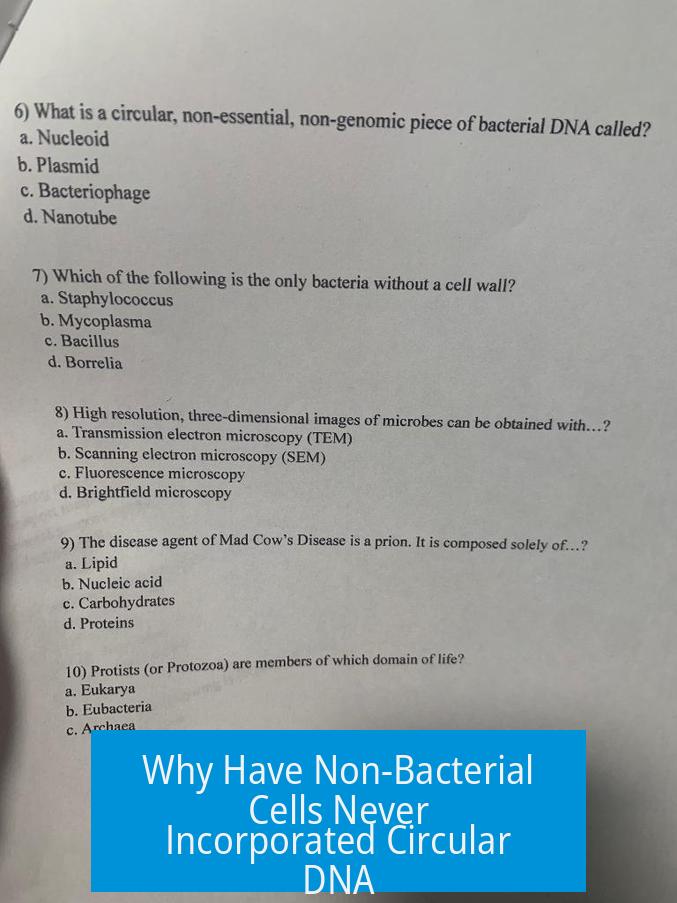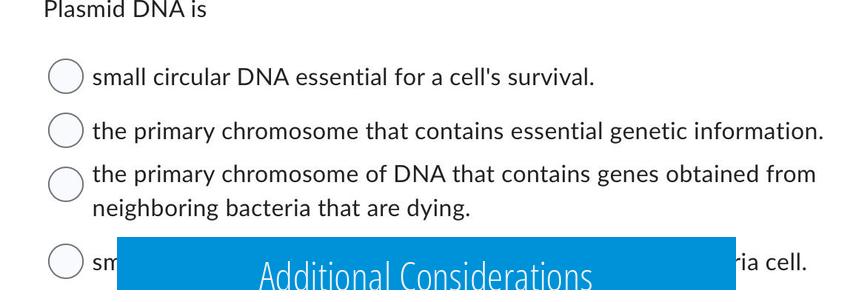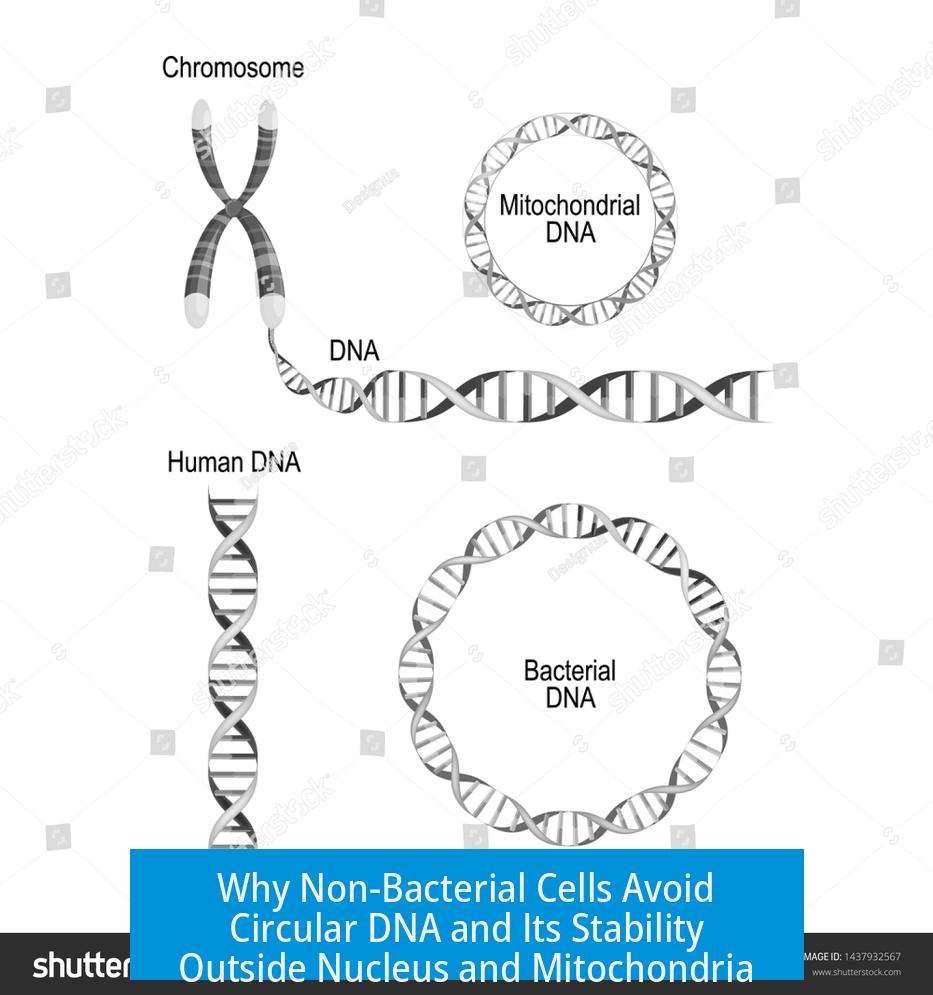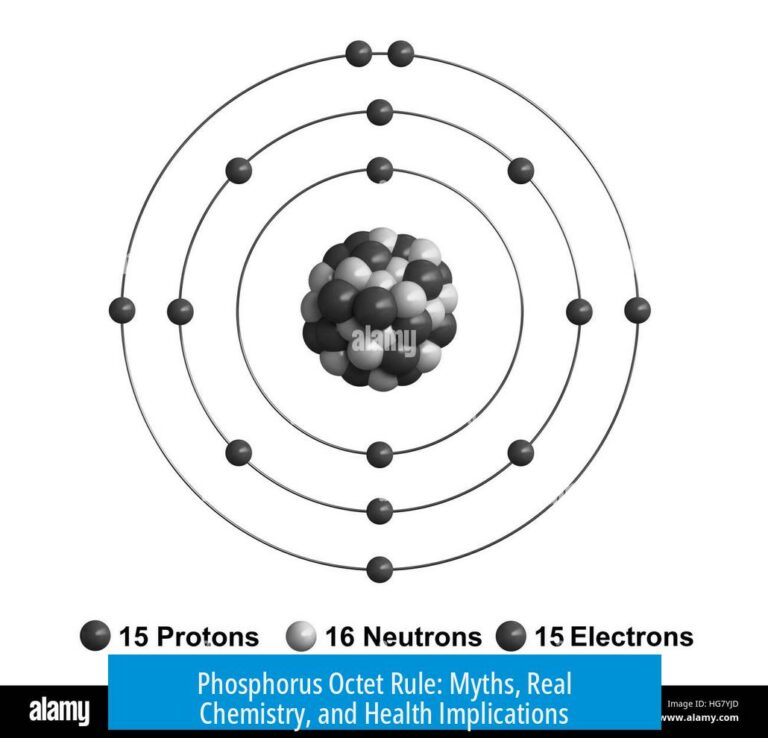Why Have Non-Bacterial Cells Never Incorporated Circular DNA?

Non-bacterial cells, primarily eukaryotes, have not adopted circular DNA as a standard genomic architecture largely because linear chromosomal DNA housed in the nucleus provides greater efficiency, protection, and regulatory control. Circular DNA does exist transiently in eukaryotic cells but is generally linked with genomic instability and is not a stable, heritable form.
Presence of Circular DNA in Eukaryotic Cells
Circular DNA forms are not wholly absent in non-bacterial cells. Eukaryotes can generate circular DNA as byproducts of chromosomal events such as recombination. These circular DNA molecules are often transient and do not usually integrate into the genome permanently. Their presence correlates strongly with genomic instability and may indicate cells headed towards apoptosis or carcinogenesis.
Natural circular DNA is most commonly found within mitochondria and chloroplasts, organelles of bacterial origin that retain circular genomes. Apart from these organelles, circular DNA in the nucleus or cytoplasm is rare and often associated with viral episomes or experimental transfection plasmids.
Reasons Against Incorporation of Circular DNA in Eukaryotic Genomes
- Compartmentalization and Genomic Organization: Eukaryotic cells benefit from compartmentalizing their genetic material within the nucleus, where chromosomal DNA is organized into linear structures. This organization facilitates precise regulation during replication, transcription, and cell division.
- DNA Protection: Linear chromosomes inside the nucleus are protected from nucleases and enzymatic degradation. Circular DNA located outside nuclear compartments is vulnerable to destruction by cellular enzymes like DNases.
- Gene Copy Number Control: Linear chromosomal DNA enables more reliable control of gene copy number. Circular DNA, if duplicated independently, could cause imbalance in gene dosage, complicating regulatory networks.
- Lifespan and Telomere Function: Linear DNA with telomeres enforces a finite cellular lifespan, an important aspect of tissue homeostasis. Circular DNA evades this end replication problem, which is implicated in cancer cell immortalization.
- Distinction Between Self and Foreign DNA: Circular DNA structures, such as viral episomes, sometimes evade host defenses by attaching to chromosomes. This complicates immune recognition and could introduce genomic instability. Eukaryotic cells have evolved to restrict such structures to avoid disruption of genetic integrity.
DNA Stability Outside the Nucleus or Mitochondria
DNA localization inside the nucleus or mitochondria offers protection from enzymatic degradation. DNA found freely within the cytoplasm or extracellular space is rapidly degraded by nucleases. Transfected plasmid DNA in mammalian cells can be expressed transiently but usually does not integrate or propagate through generations.
Consequently, circular DNA outside these compartments has limited persistence. The eukaryotic cell’s architecture effectively prevents stable maintenance of circular DNA as genomic material to protect cell function and maintain genomic integrity.
Additional Considerations

- Horizontal Gene Transfer: Some cases of DNA transfer from bacteria to eukaryotes occur, but stable incorporation of circular DNA from bacteria remains extremely rare.
- Archaea Exception: Archaea, although distinct from bacteria, also possess circular DNA, representing a different evolutionary lineage with unique genomic organization.
Summary of Key Points
- Non-bacterial cells primarily use linear chromosomes within nuclei to organize genetic material.
- Circular DNA can occur transiently in eukaryotes but is associated with genomic instability and is not stable nor heritable.
- Protective compartmentalization of DNA in the nucleus and mitochondria prevents enzymatic degradation and regulates replication.
- Linear chromosomes enable control of gene copy number and enforce finite cellular lifespan via telomeres.
- DNA outside these compartments, including circular forms, is generally degraded by nucleases.
Why have non-bacterial cells not adopted circular DNA like bacteria?
Non-bacterial cells usually keep DNA linear and inside the nucleus because it offers better protection from degrading enzymes. Linear chromosomes help control gene copy number and support finite cell lifespans.
Can circular DNA exist naturally in eukaryotic cells?
Yes, but circular DNA in eukaryotes tends to be rare and often transient. It may appear during DNA repair or recombination and is linked with genomic instability or diseases like cancer.
Does DNA get destroyed if it’s outside the nucleus or mitochondria?
DNA outside these compartments often faces degradation by enzymes like DNases. This makes the nucleus and mitochondria essential for DNA stability and inheritance.
Why don’t eukaryotic cells keep plasmids like bacteria do?
Eukaryotic cells find it challenging to distinguish plasmid DNA from viruses. Also, plasmids don’t always get passed to daughter cells efficiently, limiting their maintenance across generations.
Is the circular DNA found in viruses like Epstein-Barr similar to bacterial plasmids?
Epstein-Barr virus uses circular DNA episomes, but it attaches these to host chromosomes to avoid detection. This strategy differs from bacterial plasmids, which replicate independently.





Leave a Comment